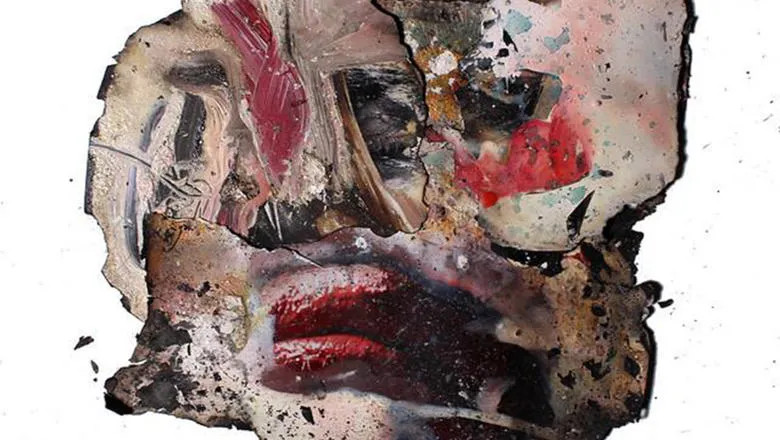30 April 2019
Truth Tellers
New art-international relations analytical methods examine impact of the 2017 Manchester Arena attacks

How can art add to analytical research methods used in the field of international relations (IR)? This is a question that relatively few have approached in the broad field of IR. However, IR scholars Dr Pablo de Orellana of King’s College London and Dr Christiana Spens of St Andrews have teamed up with poet Mariah Whelan and painter Tom de Freston to develop and test art-IR analytical methods as part of a new project examining the impacts of the 2017 Manchester Arena attacks.
Truth Tellers, the exhibition and project, is a pilot study that seeks to design a new analytical approach that uses images and descriptions to recover and explore the aesthetic codes of trauma, community and identity. For this study, Mariah and Tom have respectively contributed a number of artworks in the form of poetry and images that have assisted Pablo and Christiana’s academic methodologies in decoding the ‘unspeakable’ aspects of descriptions and representations of the Manchester Arena attacks. Through newly developed processes that involve the dismantling and reconstructing of images and descriptions, the project team hopes to better understand not only ‘what the truth of a moment, description or image may be, but also why that truth is told the way it is.’
In examining the textual aspects of Truth Tellers, Pablo and Mariah collaborated to perfect an art-IR analytical approach using poetry, Pablo explains:
“Mariah and I brought together two very different ways of looking at any given political text. I collected local, national and international news articles concerning the attacks and shared them with Mariah, while applying onto them a form of Poststructuralist discourse analysis called archaeology. This entailed analysing how identities were constructed, framed and set in relation to others, locating the points at which they were or were not politicised, identifying the subjectivity of that politicisation as well as its historical, political and contextual conditions of possibility.
“At the same time, Mariah explored Manchester as a site of meaning, emotion, meaning-making and as the living city that survived the attacks. This exploration was geographical –there are multiple references to Mancunian locales in the poems– as well as textual and historical. This allowed her to enter the mind of the night, of the events, of those not involved but who also participated in that instance of collective emotion and traumatic sense-making. Her poems are the fruit of these observations.”
In combining their approaches, Pablo applied his in-depth discursive analysis to examine Mariah’s poems as if they were original political texts. The key objective of this method was to understand how these poems could also create identities, political positions, narratives and make sense of trauma, not unlike the original discourse following the Manchester attacks. Pablo provides that “Poetry revealed itself as a powerful method to identify, retrieve, and isolate single themes of aesthetic power and significance into a page-shaped petri dish.”
In the visual section, Christiana and Tom collaborated to hone an art-IR analytical method using images, Christiana explains:
“In the visual section of the project, Tom and I used a method of intervisuality, which I developed to analyse visual representations of the aftermath of the Manchester bombing, and also to provide a structure through which to explore these ideas in a practise-led, artistic sense. The academic analysis was therefore integrated with artistic practise in such a way that deconstruction of the key images was deepened and their themes were probed further. In this process, images were broken down and remade, in order to understand how ‘truth’ was told, and to tell a different ‘truth’ that is archeological, pathological, and probing in nature. We aimed not just to find out what the ‘truth’ of a moment or image may have been, but also why that ‘truth’ was told as it was; this required a forensic and practical approach to image-making.”
This approach allowed Christiana and Tom to develop a deeper understanding of the visual narratives around the Manchester attacks in the political context and revealed the underlying function of news coverage, which was largely to bring a sense of order following the bombing itself. Tom provides that “the visual project showed the ways in which ambiguous, chaotic and emotive ideas and observations were articulated into more palatable, comforting and simplified ideas in the media.”
The product of Truth Tellers and its two groundbreaking analytical approaches for understanding the truth and impact of traumatic events will be on display in The Exchange until the 30th of May 2019. Learn more about the Truth Tellers exhibition and project here.
Truth Tellers Project Team:
TOM DE FRESTON is an artist and writer based in Oxford.
MARIAH WHELAN is a poet and academic based in The Centre for New Writing at The University of Manchester.
DR PABLO DE ORELLANA is a Lecturer in International Relations at the Department of War Studies, King’s College London.
DR CHRISTIANA SPENS is an academic and writer, currently teaching in the School of International Relations at the University of St. Andrews.
